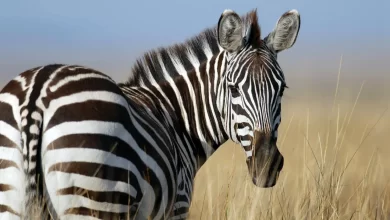They have eight legs and venom-injecting mouthparts (chelicerae). The majority produce silk. Spiders can be found on every continent except Antarctica and in almost every habitat except air and sea. Some smallest full-grown spiders can be less than 4 mm in length (0.1 inches). So here are 40 interesting facts about this wonderful but scary creature.
- Spiders are entirely carnivorous and rely on ants, bees, mosquitoes, some spiders. They can also eat small animals like frogs, birds, lizards, and centipedes.
- The world’s largest spider is Goliath birdeater. It weighs about 170g and is 30 cm in size.
- The world’s oldest spiderweb was found in an amber in Spain with its prey. It is about 110 million years old.
- Most spiders have a lifespan of 1-2 years. Whereas Goliath bird eater has a lifespan of 15-25 years.
- Spiders are found in every continent of the world except the arctic polar region and Antarctica.
- Most of the Spiders create webs to catch their prey inside them.
- It is estimated that there are about 25 million tons of spiders in the world that kill nearly 400-800 million tons of prey every year.
- Some male spiders have special legs designed to hold females’ jaws open during mating, so they don’t get eaten or bitten.
- Spider silks are a better conductor of heat than most metals.
- 14th March is celebrated as spider day, which encourages us to appreciate spiders which eat lots of insects that can spread diseases.

- The spider webs which are abandoned are called cobwebs.
- Fried spiders taste like nuts.
- Spiders have claws at the ends of their legs.
- Certain female species of spiders like the Australian crab spider sacrifice their bodies as food for their offspring.
- There are about 35000 species of spiders worldwide. But only a few are venomous and deadly to humans.
- The first spider-like creatures appeared around 386 million years ago, and the first predecessors of today spiders around 200 million years ago.
- Like other spiders, tarantulas paralyze their prey with venom, then use digestive enzymes to turn the meal into a soupy liquid.
- Tarantulas are large and often hairy spiders; the biggest species have been known to kill mice, lizards, and birds.
- The smallest species of spider is patu digua which is just about 0.37 mm, roughly just one-fifth of the headpin’s size.
- The most venomous spider in the world is the male is the Sydney funnel-web spider Atrax robustus.
- The Female Wolf spiders carry their babies on their back.
- Spiders don’t have antennae, while some insects do have.

- Most species of spiders have four eyes pairs of eyes. Two of them are for light detectors, while the other two eyes are their prominent eyes which are in front.
- The average human eats eight spiders in their lifetime at night.
- The silk produced by spiders is more robust than steel.
- Spiders can walk on water, and breathe under it, too.
- Spiders eat their own webs to recycle them.
- 95% of the spiders in your house have never been outside.
- They can live for hours in water by entering a self-induced coma.
- Research shows that if you’re afraid of spiders, you’re more likely to find one in your bedroom.

- Spiders are scared of ants due to the formic acid they contain.
- Spiders, together with scorpions, belong to the group of arachnids. Arachnids have eight legs, while insects have six legs.
- True spiders always have organs for spinning silk known as spinnerets.
- Spiders usually have eight eyes, but still, they cannot see that well.
- Spiders don’t have penises. They mate with the appendages on their face.
- Many female black widow spiders eat their males after mating.
- Orb spiders mummify their prey before they kill it.
- The phobia of fear from spiders is called arachnophobia.
- Female spiders are mostly bigger than male ones.
- There is a jumping spider called Bagheera kiplingi, which is also the only vegetarian spider.






